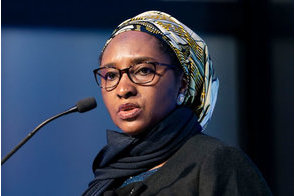Latest News
Nigeria has the highest number of extreme poor in the world – Brookings

News Highlight
Extreme poverty in Nigeria is growing by six people every minute, while poverty in India continues to fall.
Nigeria, in early 2018, has already overtaken India as the country with the largest number of extreme poor, and the Democratic Republic of Congo could soon take over the second position, according to the Brookings Institutions.
In a recent publication, The Start of a New Poverty Narrative, the American research group stated that Nigeria, as at the end of May 2018, had about 87 million people in extreme poverty, compared with India’s 73 million. And extreme poverty in Nigeria is growing by six people every minute, while poverty in India continues to fall.
The report was authored by Homi Kharas, Interim Vice President and Director of Global Economy and Development, Kristofer Hamel, Chief Operating Officer at World Data Lab and Martin Hofer, Research Analyst, World Data Lab.
In Africa, by the end of 2018, 3.2 million more people will be living in extreme poverty, the authors projected.
Globally, Africans account for two-thirds of world’s extreme poor. And if current trends persist, by 2030, they will account for nine-tenths.
Fourteen out of 18 countries in the world, where the number of extreme poor is rising, are in Africa.
The report, also, stated that achieving the Sustainable Development Goal
(SDG) of ending poverty is becoming increasingly difficult.
According to the report, if extreme poverty is to fall to zero by 2030,
120 million people should have already escaped extreme poverty. However, only about 83 million people, between January 2016 and July 2018, have escaped extreme poverty.
In order to achieve this goal, an estimate of 1.6 people per second through 2030 must escape extreme poverty. However, “because so many countries are falling behind, the actual pace of poverty reduction is starting to slow down. Our projections show that by 2020, the pace could fall to 0.9 people per second, and to 0.5 people per second by 2022,” the authors stated.
Related News
Latest Blogs
- AML/CFT regulations and data protection require balance in regulating cryptocurrency
- It's time for honest discussions on Nigeria's security architecture
- Driving economic growth through green transition in Nigeria
- CBN is fighting inflation instead of stagflation
- Why electricity privatization failed (2)
Most Popular News
- IFC, partners back Indorama in Nigeria with $1.25 billion for fertiliser export
- NDFF 2024 Conference to boost Nigeria’s blue and green economies
- CBN increases capital requirements of banks, gives 24 months for compliance
- CBN settles backlog of foreign exchange obligations
- Univercells signs MoU with FG on biopharmaceutical development in Nigeria
- Ali Pate to deliver keynote speech at NDFF 2024 Conference




